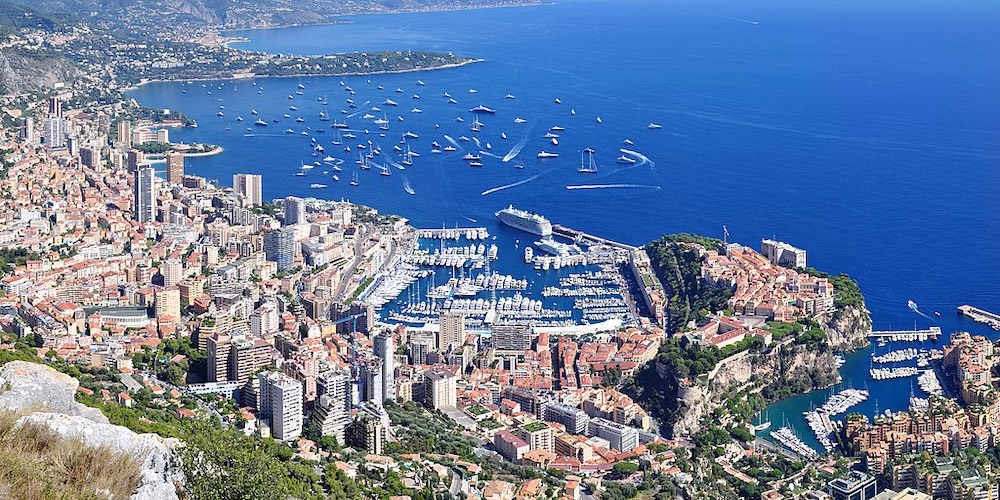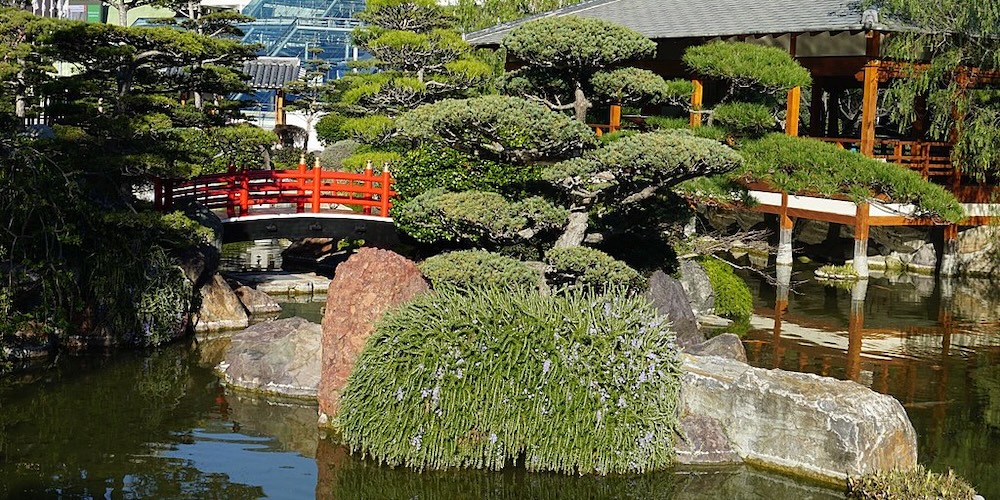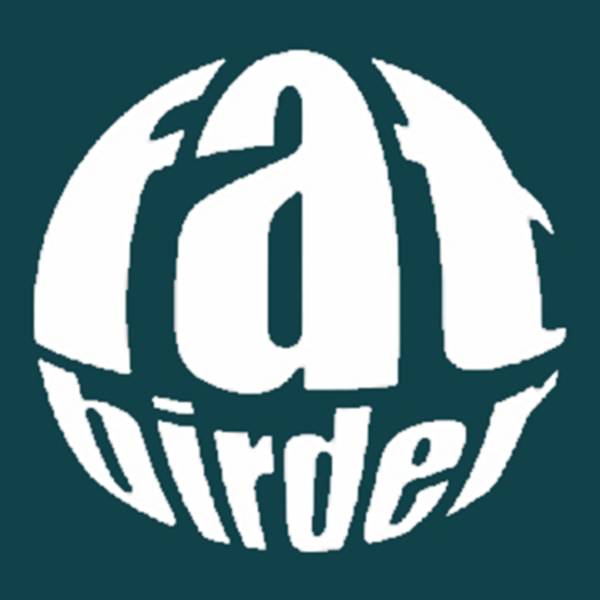Principality of Monaco

Monaco is a sovereign city-state and microstate on the French Riviera a few kilometres west of the Italian region of Liguria, in Western Europe, on the Mediterranean Sea. It is a semi-enclave bordered by France to the north, east and west. Only around 25% of residents are Monégasque nationals. It is recognised as one of the wealthiest and most expensive places in the world. The official language of Monaco is French. Monégasque, English and Italian are also spoken and understood by many residents. With an area of 2.08 km2 (0.80 square miles), Monaco is the second-smallest sovereign state in the world, after Vatican City. Its population of 38,341 makes it the most densely populated sovereign state. Monaco has the world’s shortest national coastline: 3.83 km (2.38 miles). The principality is about 15 km (9.3 miles) from the border with Italy and consists of nine administrative wards, the largest of which is Monte Carlo.
Monaco’s mild climate, scenery, and gambling facilities have contributed to its status as a tourist destination and recreation centre for the rich. It is a tax haven; it has no personal income tax (except for French citizens) and also has low business taxes. Over 30% of residents are millionaires, with real estate prices reaching €100,000 per square metre (2018). It is a global hub of money laundering, and (2024) the Financial Action Task Force placed Monaco under increased monitoring to combat money laundering and terrorist financing. It is not part of the European Union, but participates in certain EU policies, including customs and border controls. Through its relationship with France, Monaco uses the euro as its sole currency.

Monaco – ©Tobi 87 CC BY-SA 3.0 via Wikimedia Commons
Jurassic limestone is a prominent bedrock which is locally karstified. The highest point in the country is at the access to the Patio Palace residential building on the Chemin des Révoires 539 feet above sea level. The lowest point in the country is the Mediterranean Sea. Saint-Jean brook is the longest flowing body of water, around 0.19 km (620 feet) in length, and Fontvieille is the largest lake, approximately 0.5 ha (1.2 acres) in area. Monaco’s most populated quartier is Monte Carlo, and the most populated ward is Larvotto/Bas Moulins. Some land is being reclaimed from the sea.
Monaco has a hot-summer Mediterranean climate with strong maritime influences, with some resemblances to the humid subtropical climate. As a result, it has balmy warm, dry summers and mild, rainy winters. The winters are very mild considering the city’s latitude, being as mild as locations located much further south in the Mediterranean Basin. Cool and rainy interludes can interrupt the dry summer season, the average length of which is also shorter. Summer afternoons are infrequently hot (indeed, temperatures greater than 30 °C are rare) as the atmosphere is temperate because of constant sea breezes. On the other hand, the nights are very mild, due to the fairly high temperature of the sea in summer. Generally, temperatures do not drop below 20 °C in this season. In the winter, frosts and snowfalls are extremely rare and generally occur once or twice every ten years.
Birding Monaco
Green areas of the micro-state are limited, but the nature of the rocky area does mean that wildlife does occupy some niches. As the principality is also eco-aware around 20% is greenery with parks and leafy neighbourhoods with private gardens.

Japanese Gardens – ©Einaz80 CC BY-SA 4.0 via Wikimedia Commons
In additions there are some public parks & gardens and a zoo which does mean some birds are resident or visit. Even a few deer, foxes and weasels have a toehold.
There are several gardens in Monaco, which are in a variety of styles and purpose. There is an exotic plant garden, Saint Martin garden, African plants garden, Casino Gardens, Princess Grace Rose Garden, and a Japanese Gardens.
While it cannot be considered a birding destination, sharp-eyed visitors can encounter a broad cross-section of Mediterranean bird species.
-
Wikipedia
Information
-
Number of bird species: 196
(As at April 2025)State Bird: Lesser Grey Shrike Lanius minor
-
Avibase
PDF ChecklistThis checklist includes all bird species found in Monaco , based on the best information available at this time. It is based on a wide variety of sources that I collated over many years. I am pleased to offer these checklists as a service to birdwatchers. If you find any error, please do not hesitate to report them. -
E-Bird
PDF ChecklistThis checklist is generated with data from eBird (ebird.org), a global database of bird sightings from birders like you. If you enjoy this checklist, please consider contributing your sightings to eBird. It is 100% free to take part, and your observations will help support birders, researchers, and conservationists worldwide. -
Wikipedia
Annotated ListThis is a list of the bird species recorded in Monaco. The avifauna of Monaco include a total of 196 species.
-
Birds of Europe, North Africa, and the Middle East
| Photographic Guide | By Frédéric Jiguet & Aurélien Audevard | PUP | 2017 | Paperback | 447 pages, 2200 colour photos, colour distribution maps | ISBN: 9780691172439 Buy this book from NHBS.com -
Collins Bird Guide
| By Lars Svensson | Harper Collins | Edition 3 | 2023 | Paperback | 478 pages, 4000+ colour illustrations, 700 colour distribution maps | ISBN: 9780008547462 Buy this book from NHBS.com

Collins Bird Guide
AndroidThe Collins Bird Guide App provides everything you need to identify a species quickly and learn about it thoroughly.
Collins Bird Guide
Apple iOS |Collins Bird Guide 4+ A field guide to Europe NatureGuides Ltd. Designed for iPadOrganisations-
Monegasque Association for the Protection of Nature
WebsiteThe Monegasque Association for the Protection of Nature was founded in 1975 at the initiative of Prince Rainier III who wanted to set up a protected area along the Monegasque coastline.
Sightings, News & Forums-
eBird
SightingseBirding This Month
Fatbirder - linking birders worldwide...
Skip to content
